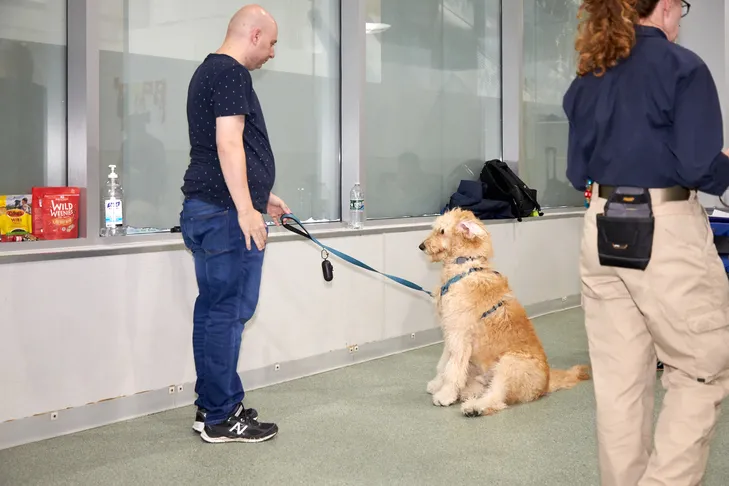Rewarding your puppy is crucial for successful training. While toys and playtime are great, food treats are often the most convenient and effective way to motivate your young dog. But with so many options available, What Is A Good Training Treat For Puppies? This guide will help you choose the right treats for different training situations, ensuring your puppy stays engaged and learns quickly.
The Importance of Fast-Eating Treats for Puppy Training
When teaching your puppy new commands, keeping them motivated and interested is essential. A high rate of reinforcement (frequent rewards) is key. To deliver treats quickly, choose options that your puppy can eat fast. This helps maintain their focus and allows for more repetitions in a shorter time.
If your puppy gobbles up a treat instantly, you can move to the next repetition immediately. However, if they spend several seconds eating each treat, it slows down the training session. This can lead to decreased focus or fewer practice rounds. This is why choosing the right treat is so important. You should also consider reading up on what is a good treat for dog training for additional insights.
Small Treats are Essential for Puppy Training
Small dog treats are vital for maintaining momentum during training. Even for larger breeds, a pea-sized treat is sufficient. For smaller puppies, use even tinier pieces. Many commercial treats are too large, so look for small options or cut larger ones into smaller bits before training. Don’t worry about cheating your pup; as long as they enjoy the treat, they won’t mind if it’s just a tiny piece.
 Japanese Akitainu getting a treat from a young woman outdoors in the fall.
Japanese Akitainu getting a treat from a young woman outdoors in the fall.
Smaller treats are also better for your puppy’s health. Puppies in training often consume a significant number of treats daily. Keeping the treats small helps minimize calorie intake and prevents your puppy from getting full before the session ends.
Soft and Stinky Treats: A Puppy’s Favorite
Soft dog treats are excellent for training because they are easier and faster for puppies to eat compared to crunchy treats. Biscuits can be good for occasional rewards, but during training, waiting for your puppy to chew and swallow means less time for teaching.
Soft treats are also typically smellier, and puppies love strong scents. Every puppy has a hierarchy of rewards, and smelly treats like cheese or bacon often rank high. You might get away with using kibble as a reward at home, but in distracting environments, stinky treats can grab your puppy’s attention.
Variety is the Spice of a Puppy’s Training Life
Just like humans, puppies can get bored with the same old treats. If you notice your puppy’s enthusiasm waning, switch to a different reward of equal or greater value. You can even use several different treats during a single session to keep your puppy guessing and excited about what’s coming next.
Convenient Treats for On-the-Spot Puppy Training
Sometimes you need treats on hand for spontaneous training, such as reinforcing good behavior at home. Keeping treats in your pocket or a dog treat bag allows you to provide immediate rewards.
 AKC Canine Retreat CGC
AKC Canine Retreat CGC
Perishable treats like leftover chicken aren’t practical for carrying around. Instead, opt for non-perishable options like freeze-dried liver or jerky treats cut into tiny pieces.
Long-Lasting Treats for Specific Situations
Sometimes, you want treats that last as long as possible. These are perfect for teaching your puppy to love their crate, helping them stay occupied while you’re away, or encouraging them to lie quietly next to you.
Chewy treats like bully sticks are great for savoring. Alternatively, use dog toys you can stuff with food. A Kong filled with cream cheese or peanut butter can provide hours of entertainment. You can also plug the end of a Kong, fill it with broth, and freeze it for a refreshing snack on a hot day.
Choosing the right training treats for your puppy involves considering size, texture, smell, and the specific training situation. By using a variety of treats and keeping them small and delicious, you can keep your puppy motivated and make training a positive experience for both of you.
